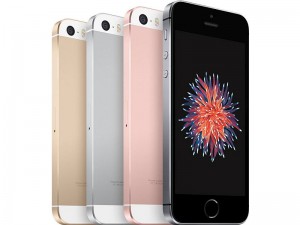Share This
Related Posts
Tags
iPhone SE
By Anca Gagiuc on Mar 31, 2016 in Technology
Aside from the ongoing battle with the Depar tment of Justice and its commitment to customer data privacy, Apple found one hour in March to introduce a few springy updates—a new iPhone, new iPad, news on the Apple Watch, Apple TV and CarPlay, and a new iOS version.
tment of Justice and its commitment to customer data privacy, Apple found one hour in March to introduce a few springy updates—a new iPhone, new iPad, news on the Apple Watch, Apple TV and CarPlay, and a new iOS version.
The world today has smartphones that come in two sizes—big and huge. It is hard to turn to smaller devices after going big. Yet, the new iPhone SE seems to be the first one made for those with thumbs lacking the wingspan of albatrosses. As the company said, “this light and compact phone is designed to fit comfortably in your hand”.
Steve Jobs’ words come to mind regarding phones and how they should match the ergonomics of your hand. In 2010, as competitors were selling larger devices, he mocked a big phone: “You can’t get your hand around it… No one’s going to buy that.”
But in 2014 Apple changed its mind and released iPhones with 4.7 inches and 5.5 inches, up from 4 inches for older models such as the iPhone 5 and 5S. Yet more than 30 million consumers bought the older four-inch iPhones last year, according to the company. “Some people even pleaded with us to please keep the four-inch products,” said Greg Joswiak.
Apple made now another U-turn with this new 4-inch phone (was Steve Jobs right after all?) The iPhone SE will be released on March 31. It has the style of iPhone 5S released in 2013 (adding the new rose gold color), but the inside hides most of the upgrades launched with the iPhone 6S released in 2015. Yes, only most of them. The iPhone SE comes equipped with the same powerful 64-bit A9 processor as the 6S, which makes it just as fast. The petit iPhone has the stunning 12-megapixel camera of the 6S (which doesn’t stick out at all), along with the ability to shoot Live Photos, and 4K videos, the Focus Pixels to get the sharper autofocus and a True Tone flash. Moreover, the SE comes with support for Apple Pay, the Lightning port for power cables and the standard headphone jack for audio accessories.
However, the SE is not “big enough” for a number of attributes of the 6S: it doesn’t have the 3D Touch, the feature that allows the user to control some software by exerting pressure on the touch screen. The SE has a lower-quality front-facing camera (meaning grainier selfies) and a slower fingerprint sensor compared with the 6S. And since we’re at it, the SE’s screen is less bright and vibrant than the 6S’s display.
What stands out is the battery life. The tiny device scored very well in the benchmark tests—more than two hours longer than both the iPhone 5S and 6S, and almost three hours longer than the Galaxy S7. It makes sense that the smaller SE would have longer battery life when the display is being used—even though it’s a smaller phone with (most likely) a smaller battery, the device has a significantly smaller display, the biggest battery hog on phones.
Have we reached that point where a phone from 2013 is considered retro?
Another big reason one would buy this phone is its better size for your hand, even though it sends the user “back in time”. And it’s newness—the 4-inch form factor is no longer the norm, but the exception. Everybody talks about Apple not introducing a new hero device, but fail to see that the SE is a purpose-built device, a small(er) but a mighty one.
Another big plus is the not-so-big price—at $399 without a contract, $250 less than its larger sibling—the SE will be appealing to parents, as well as to corporations or people on a budget who are considering their first iPhone. Still, the 16GB of storage at this price is nowhere near sufficient to take advantage of all the features. If you want this phone, go for the 64GB version for $499. All in all, the iPhone SE is definitely a business win, not so sure about it representing a technology leap.
